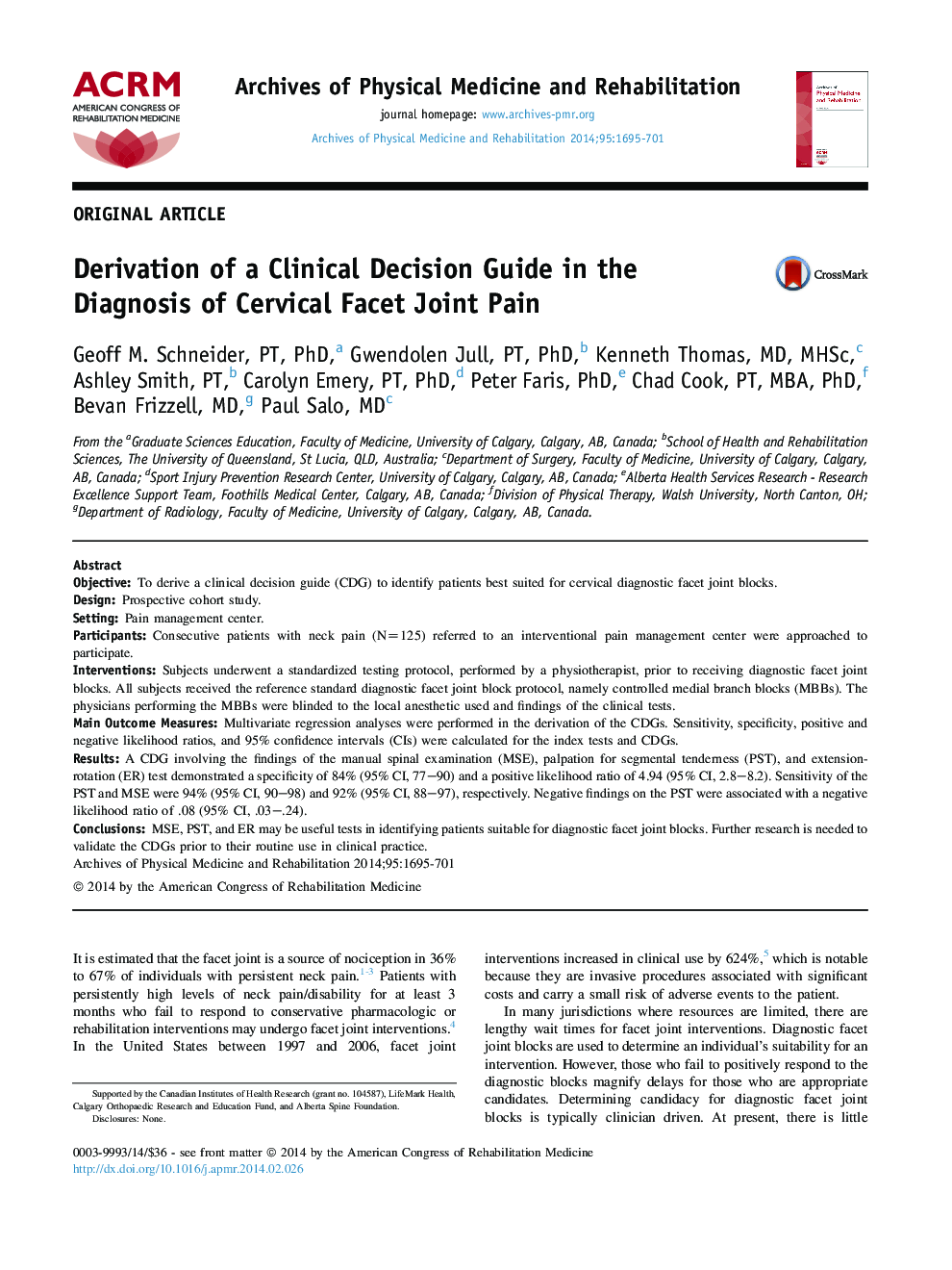| Article ID | Journal | Published Year | Pages | File Type |
|---|---|---|---|---|
| 3448855 | Archives of Physical Medicine and Rehabilitation | 2014 | 7 Pages |
ObjectiveTo derive a clinical decision guide (CDG) to identify patients best suited for cervical diagnostic facet joint blocks.DesignProspective cohort study.SettingPain management center.ParticipantsConsecutive patients with neck pain (N=125) referred to an interventional pain management center were approached to participate.InterventionsSubjects underwent a standardized testing protocol, performed by a physiotherapist, prior to receiving diagnostic facet joint blocks. All subjects received the reference standard diagnostic facet joint block protocol, namely controlled medial branch blocks (MBBs). The physicians performing the MBBs were blinded to the local anesthetic used and findings of the clinical tests.Main Outcome MeasuresMultivariate regression analyses were performed in the derivation of the CDGs. Sensitivity, specificity, positive and negative likelihood ratios, and 95% confidence intervals (CIs) were calculated for the index tests and CDGs.ResultsA CDG involving the findings of the manual spinal examination (MSE), palpation for segmental tenderness (PST), and extension-rotation (ER) test demonstrated a specificity of 84% (95% CI, 77–90) and a positive likelihood ratio of 4.94 (95% CI, 2.8–8.2). Sensitivity of the PST and MSE were 94% (95% CI, 90–98) and 92% (95% CI, 88–97), respectively. Negative findings on the PST were associated with a negative likelihood ratio of .08 (95% CI, .03–.24).ConclusionsMSE, PST, and ER may be useful tests in identifying patients suitable for diagnostic facet joint blocks. Further research is needed to validate the CDGs prior to their routine use in clinical practice.
